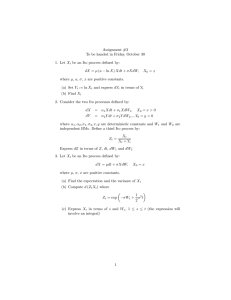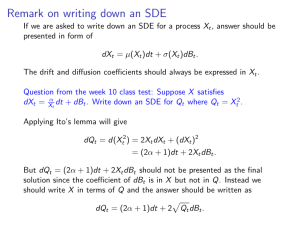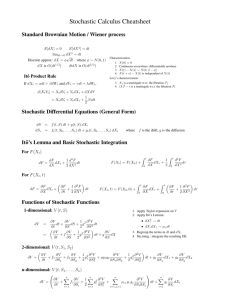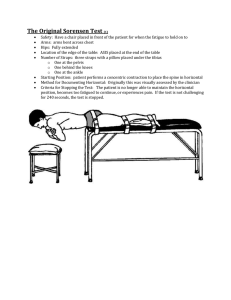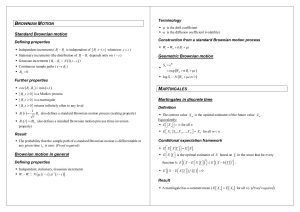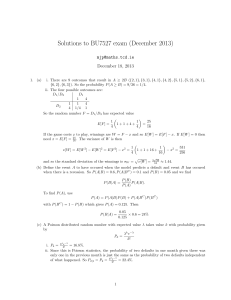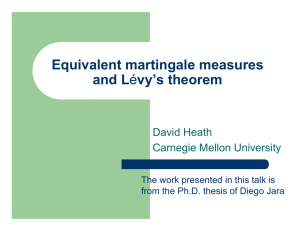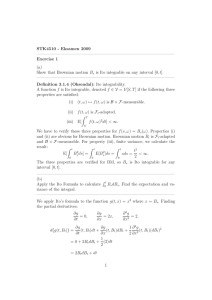MATH 177 PROBLEM SET 2 that if dX
advertisement
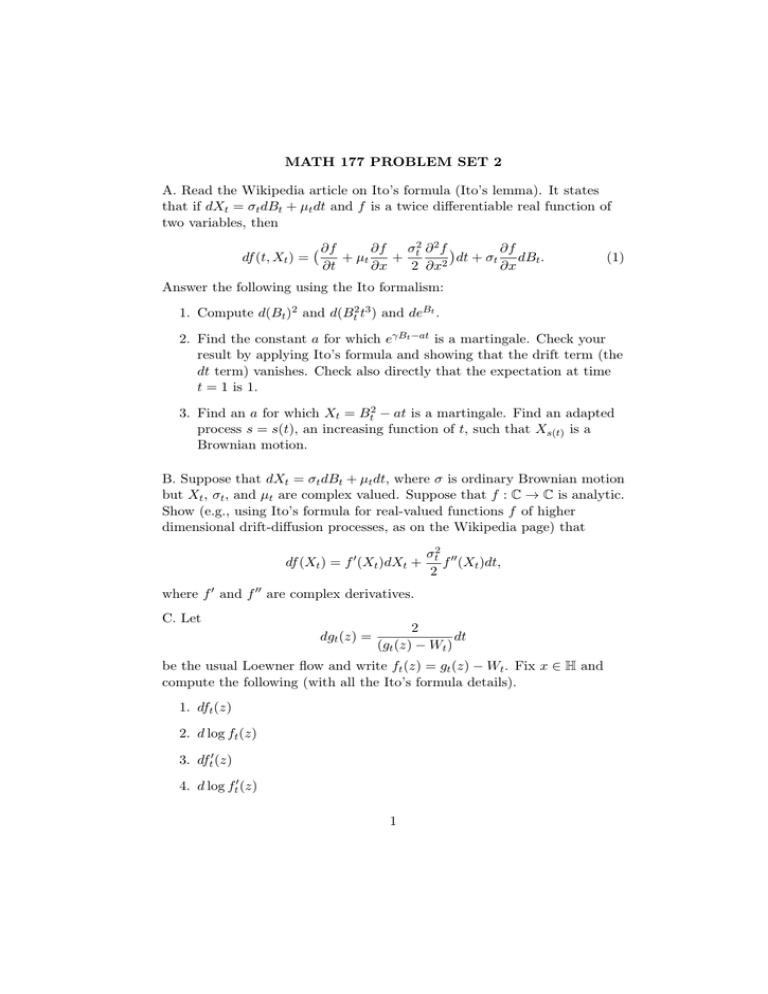
MATH 177 PROBLEM SET 2 A. Read the Wikipedia article on Ito’s formula (Ito’s lemma). It states that if dXt = σt dBt + µt dt and f is a twice differentiable real function of two variables, then df (t, Xt ) = ∂f ∂f ∂f σ2 ∂ 2f dt + σt dBt . + µt + t 2 ∂t ∂x 2 ∂x ∂x (1) Answer the following using the Ito formalism: 1. Compute d(Bt )2 and d(Bt2 t3 ) and deBt . 2. Find the constant a for which eγBt −at is a martingale. Check your result by applying Ito’s formula and showing that the drift term (the dt term) vanishes. Check also directly that the expectation at time t = 1 is 1. 3. Find an a for which Xt = Bt2 − at is a martingale. Find an adapted process s = s(t), an increasing function of t, such that Xs(t) is a Brownian motion. B. Suppose that dXt = σt dBt + µt dt, where σ is ordinary Brownian motion but Xt , σt , and µt are complex valued. Suppose that f : C → C is analytic. Show (e.g., using Ito’s formula for real-valued functions f of higher dimensional drift-diffusion processes, as on the Wikipedia page) that df (Xt ) = f 0 (Xt )dXt + σt2 00 f (Xt )dt, 2 where f 0 and f 00 are complex derivatives. C. Let dgt (z) = 2 dt (gt (z) − Wt ) be the usual Loewner flow and write ft (z) = gt (z) − Wt . Fix x ∈ H and compute the following (with all the Ito’s formula details). 1. dft (z) 2. d log ft (z) 3. dft0 (z) 4. d log ft0 (z) 1 −2 Do the same in the case of reverse flow, where dgt = (gt (z)−W dt. In each t) 0 case, find a linear combination ht (z) of log ft (z) and log ft (z) which is a local martingale. Suppose we write at = gt (−1) and fix α ∈ R. Can you define a process Wt that makes log(gt (z) − at ) + ht (z) a local martingale for each fixed z ∈ H? D. Let α be a complex number in the upper half plane, and consider the continuous path f (s) = αs. Compute explicitly the half-plane capacity f ([0, s]) and the conformal map Φ : H \ f ([0, s]) to H, normalized so that limz→∞ Φ(z) − z = 0. Verify Loewner’s theorem in this setting. E. Read the (short) Wikipedia article on Bessel processes and verify the claims about the path being recurrent, transient, neighborhood recurrent depending on dimension. You can consult Revuz-Yor (or another source) if needed. F. Read the St. Flour lecture notes by Wendelin Werner and write a one-paragraph summary of each of your two favorite sections. 2
